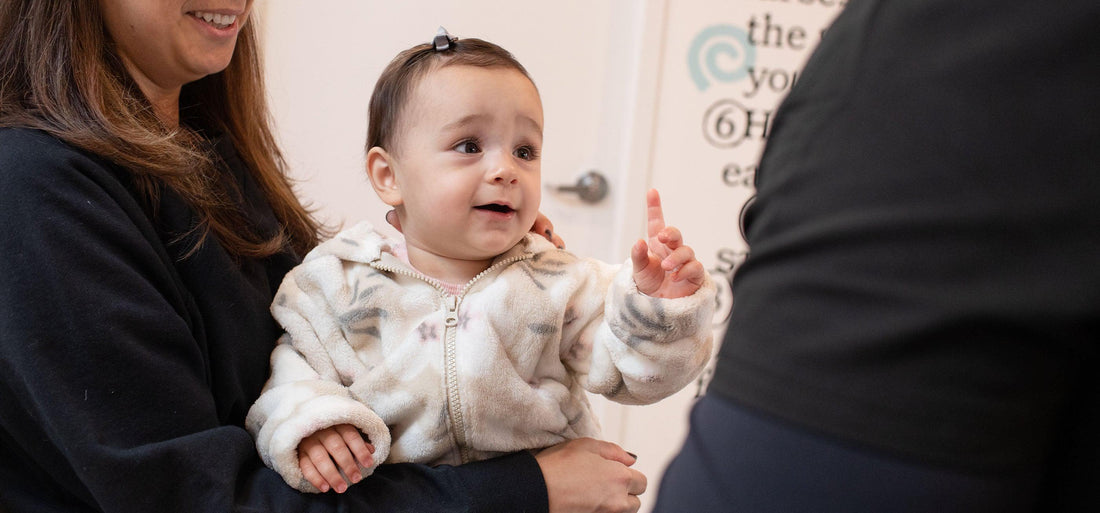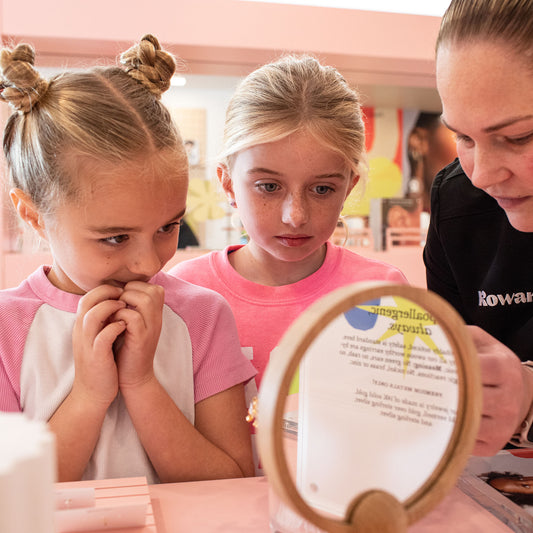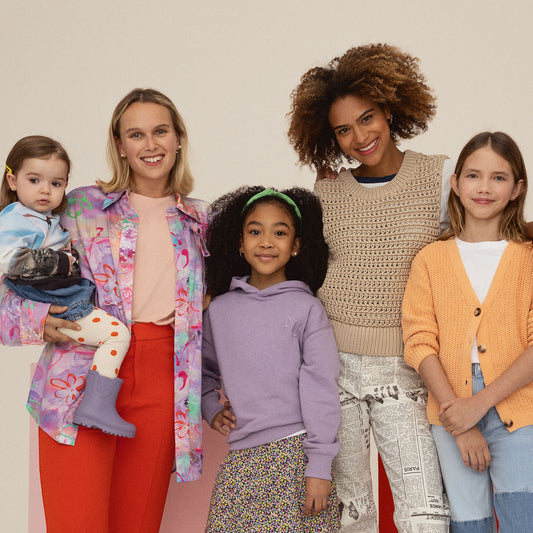Everything You Need to Know About Baby Ear Piercing
What Parents & Guardians Need to Know

Ear piercing is a milestone often celebrated with the tiniest of ears. If you are considering ear piercing for your infant, this guide provides all the essential information to help you make an informed decision.
When can babies get their ears pierced?
At Rowan, our licensed nurses pierce babies as young as 2 months of age as long as they’ve received their DTaP vaccine.
Dr. Nancy Fazzinga, MD, FAAP, who sits on Rowan’s Medical Advisory Board states “We know you may be nervous about getting your baby’s ears pierced. We set our policy in accordance with the CDC’s recommendation that infants receive their first DTaP vaccination at 2 months of age. Receiving the DTaP vaccination prior to ear piercing helps us to ensure the safety of the infant, as the vaccination reduces the risk of infection in infants.”
What is the best age for ear piercing?
Honestly, it's a personal choice. Piercing your baby’s ears before the age of one may lead to easier healing, as infants are less likely to touch or play with their earrings. However, all aftercare responsibilities fall on the parent or guardian. Some parents choose to have their baby’s ears pierced during infancy for this reason, while others prefer to wait until the child is older and can take care of their own piercings.
Regardless of your child’s age, it is most important to make sure you choose the safest option to get their ears pierced by a licensed nurse.
How do I prepare for my baby’s ear piercing?
The best thing you can do before bringing a baby in to get their ears pierced is be prepared. Here are a few tips to ensure the piercing is safe and efficient.
1. Timing, timing, timing.
The best time to pierce your baby’s ears is when they are happy and calm, usually right after eating and a nap. Scheduling an appointment that works with your baby’s routine will help ensure a fun and stress-free experience for you and your baby.
2. Bring distractions
Pacifiers or bottles are great ways to distract babies from the small discomfort they may feel while getting pierced.
3. Be ready to feed your baby immediately after the piercing.
Babies are developmentally designed to be comforted by having something in their mouth, particularly a food source or a pacifier. Preparing to breast or bottle feed your baby right after their piercing will calm your baby and distract them from any minor discomfort they may be experiencing.
How is Rowan’s hand pressurized device different from a piercing gun?
Our hand pressurized device is not spring loaded like a traditional piercing gun. Our hand pressurized device is in the complete control of our nurses’ hands to guide and pierce safely.
What does a baby ear piercing at Rowan look like?
1. Choose the Earrings
Select the earrings you'd like for your baby. We nurses recommend Round Diamond Studs - 2.4mm for little ears. We especially like these for our smallest customers due to their small size and rounded bell backing.
2. Get Seated in the Piercing Chair
Your nurse will guide you and your baby to the designated piercing chair.
3. Ear Assessment and Cleaning
The nurse will assess your baby’s ears and clean both the front and back of the lobes using an alcohol pad.
4. Marking the Placement
Dots will be placed on the ears to indicate where the earrings will go. This is the most time-consuming part, as precise placement is key.
5. Placement Confirmation
Once the dot placement looks perfect, the nurse will proceed with the piercing process.
6. Secure Hold
You'll be asked to hold your baby firmly to prevent movement. We have three varying ways for you to hold your baby and our nurses will guide you through the best one for you and your child. Our most popular hold includes placing one hand over your baby’s arm like a seatbelt and using the other to gently stabilize the head.
7. The Piercing
With your baby securely held, the nurse will perform the piercing quickly, efficiently, and safely. After one ear is completed, the nurse will guide you in how to re-adjust your hold so that the nurse can pierce the other ear.
8. Celebrate
It's that easy!
How do I take care of the piercing?
1. Always wash your hands before touching the earrings.
2. Clean your piercing with our Aftercare Solution 2 to 3 times a day for 30 days—front and back.
3. Rotate the earrings 1x while wet after cleaning
4. Do not tighten the earring backs; leave room in front and back of the earrings.
5. Disinfect everything that goes in, on, or around the ears once daily to decrease the risk of introducing bacteria to the site.
6.Keep hypoallergenic earrings in the piercings 24/7 for at least 1 year post-piercing.
If your child is still feeling discomfort, call your pediatrician. They may be able to recommend over-the-counter pain management medications based on your child’s history.



